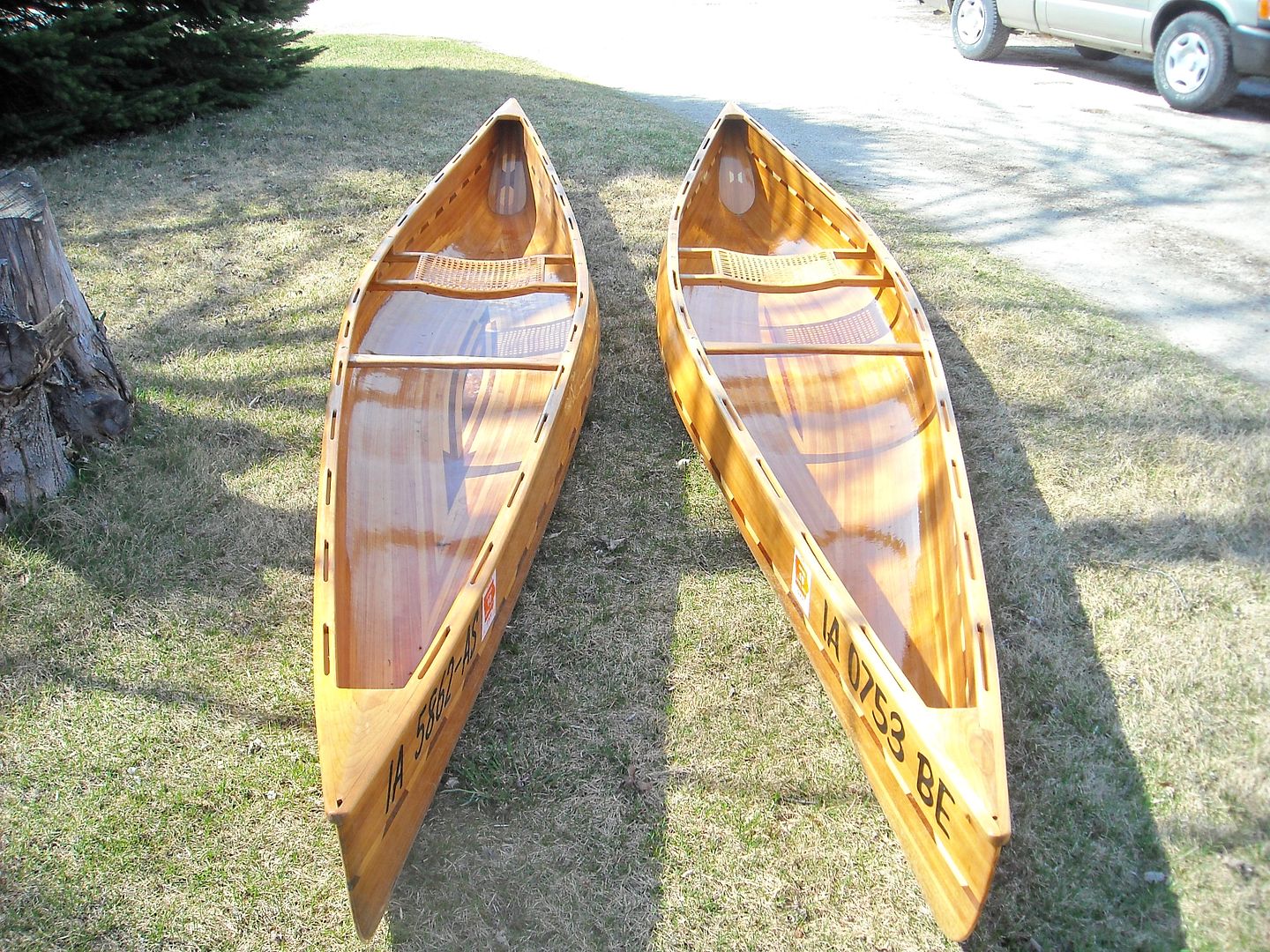No Title
Hi Ben,
I used 3/8" x 7/8" cherry on the gunnels and it turned out stiff/strong enough. If you chamfer the bottom of each strip, the water won't collect on the inside and it saves a little weight.
If you are going to epoxy them on ( I prefer this) with thickened epoxy, I usually saturate both joint areas with unthickened epoxy first ... then lightly butter one side with thickened before clamping. Speaking of clamping, make sure you have enough clamps ... (see Photo 1 )
If the cap is being considered to hide the hull/gunnel interface, an alternative thought would be to forego the cap, colour the thickened epoxy to actually accent the joint ... this can add interest to the final product ... in photo 2 a white cedar hull, contrasts nicely with cherry gunnels, using a dark cherry thickened epoxy. You can vary the tint to suit your materials.
I also like to finish the gunnels with epoxy, makes them more ding/scratch resistant and makes varnishing much easier and gives much nicer final finish (IMO).
Brian
Hi Ben,
I used 3/8" x 7/8" cherry on the gunnels and it turned out stiff/strong enough. If you chamfer the bottom of each strip, the water won't collect on the inside and it saves a little weight.
If you are going to epoxy them on ( I prefer this) with thickened epoxy, I usually saturate both joint areas with unthickened epoxy first ... then lightly butter one side with thickened before clamping. Speaking of clamping, make sure you have enough clamps ... (see Photo 1 )
If the cap is being considered to hide the hull/gunnel interface, an alternative thought would be to forego the cap, colour the thickened epoxy to actually accent the joint ... this can add interest to the final product ... in photo 2 a white cedar hull, contrasts nicely with cherry gunnels, using a dark cherry thickened epoxy. You can vary the tint to suit your materials.
I also like to finish the gunnels with epoxy, makes them more ding/scratch resistant and makes varnishing much easier and gives much nicer final finish (IMO).
Brian










